Creating an online portfolio?
Before you start, I'm sure you've asked yourself, "What does the best portfolio website look like? What does it include other than my best work? Do I put in case studies? Which website builder should I choose?" and other questions around the same vein.
At least, these were the questions I asked myself when creating my first portfolio. What really helped me was looking at a portfolio example or two or five.
So, in this article, I'll lay out and showcase the seven best portfolio website examples. You'll see portfolio site examples showcasing great website design, ideal for a graphic designer or web designer. The list will also include portfolio website samples created by writers, digital marketers, copywriters, and other professionals across all industries.
The only thing common among them is that each portfolio is a great benchmark for new professionals (or even those upgrading their portfolio) to aspire to.
• If you’re creating an online portfolio, you need all the help you can get. In a dog-eat-dog employment market, everything about your portfolio needs to stand out. Before you begin creating one, why not start with a look at portfolios that already stand out?
• Look through the seven portfolio website examples in this article. They belong to individuals from different industries, such as design, web development, tech writing, etc.
• If you like what you see, may I suggest a tool that will help you create such a portfolio for yourself? Enter Authory.
• The tool builds 90% of your portfolio for you, have a look at Authory. Check out the video on "How Authory works" — you enter the URL of the sites where your work is published, and Authory will import all your bylined work to its database. You can now look through all your pieces in a single location.
The best portfolio website examples (that employers love)
Owltastic

Owltastic is owned and run by Meagan Fisher Couldwell, who has 20 years of experience with designing usable and delightful digital experiences. She also writes and speaks about design at industry conferences all over the world, discussing advanced CSS techniques to the design process to user research
Meagan started as the Deputy Designer to Dan Cederholm, the founder of Dribbble. She has since worked with Twitter, Change.org, Campaign Monitor, WordPress, Classpass, the University of Pennsylvania, The Audubon Society, Adobe, and Toyota. She has also served as a creative director for multiple startups.
She is also one of the “Adobe Insiders,” participating in a program where industry leaders across different disciplines use Adobe products to create beautiful work in order to establish how useful said products really are.
This is among the best web design portfolio examples I could find. Look at Meagan's precise balance between visual allure and navigability. She clearly knows how to please the eye without sacrificing any efficacy, which is key for a great web design portfolio.
The Papestielliz
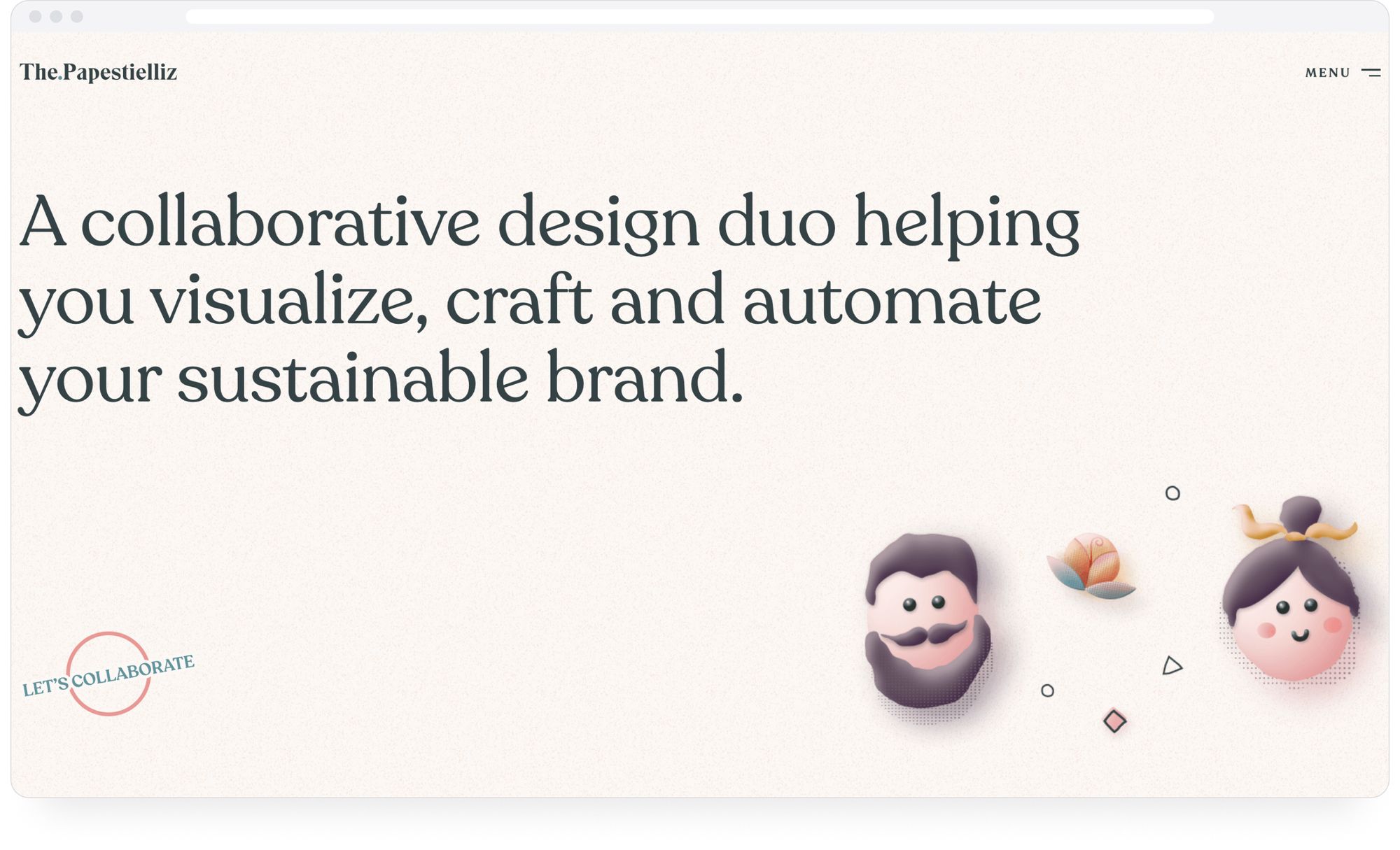
The Papestielliz are a creative, collaborative duo: Anamaria Papestieva and Almerico Robustelli, two digital nomads.
They specialize in several domains, such as Research & Discovery, Web Strategy, Brand Identity, Brand Guidelines, Web Design, UI/UX Design, E-commerce, Visual Design, Rapid Prototyping, Process Automation, User Experience, and Micro-interactions.
This long list of capabilities is amply displayed on their design portfolio. Note the use of high-quality images for the case studies. Something else stands out — the duo specifically seeks to help eco-friendly and sustainable small businesses succeed by using a responsible design process.
Lauren Arcuri
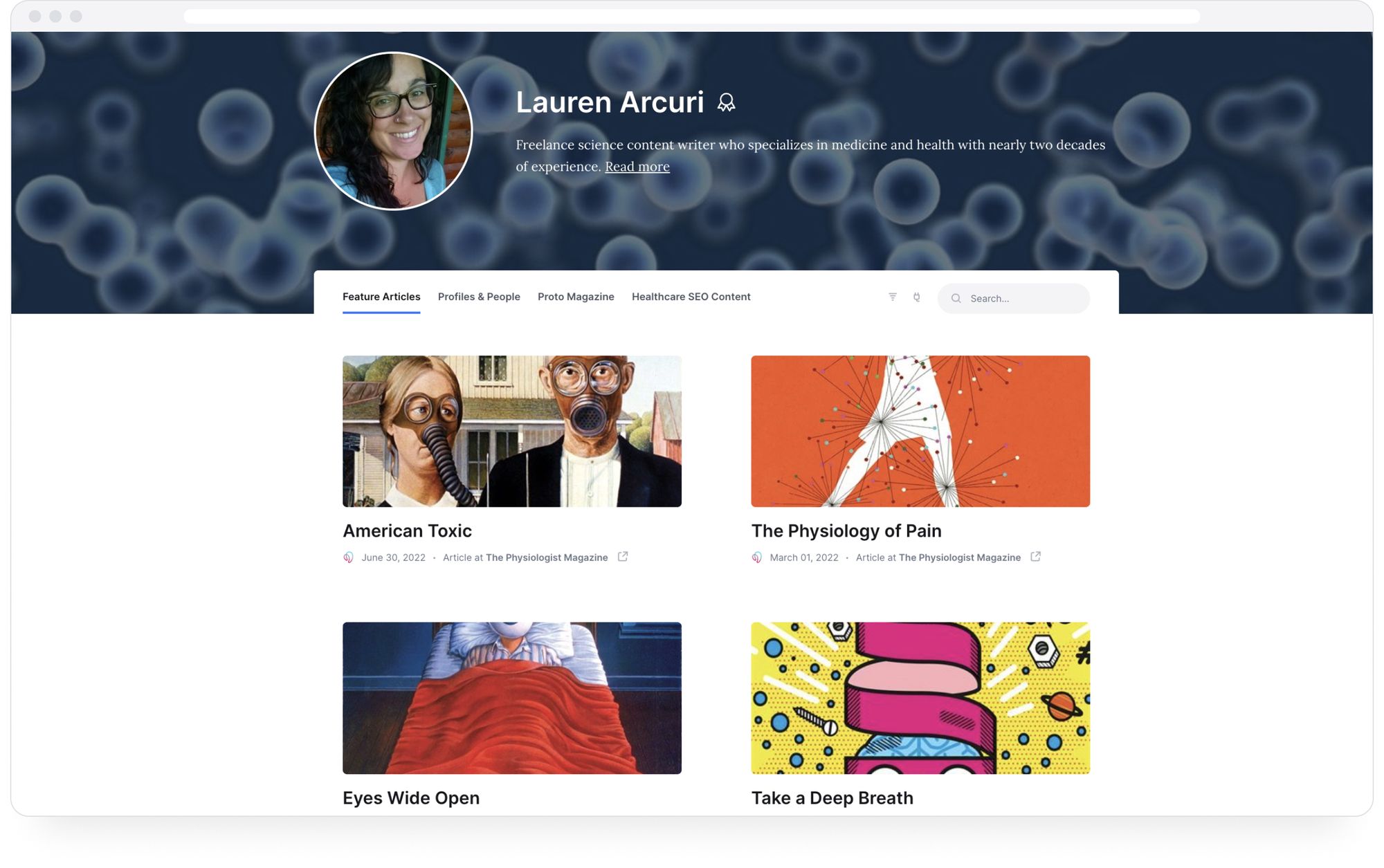
Lauren Arcuri is a freelance science content writer specializing in medicine and health.
With nearly two decades of experience, she examines the newest developments in medicine and science. A major strength is her ability to translate dense research into easy-to-read, lively, accurate stories. Her work has been published in Pacific Standard, Proto, EatingWell, Utne Reader, and Yoga Journal, among others.
Lauren has, in her writings, covered neuroscience, genetics, rare disorders, the microbiome, autoimmune disease, cell biology, as well as health and wellness. Not only does she write about the hard sciences, but she also speaks to and talks about "the people in medicine and science—the professionals who care for patients, the researchers who work tirelessly in the lab, and the people who live and thrive with complex, chronic disease."
Kyle Jones
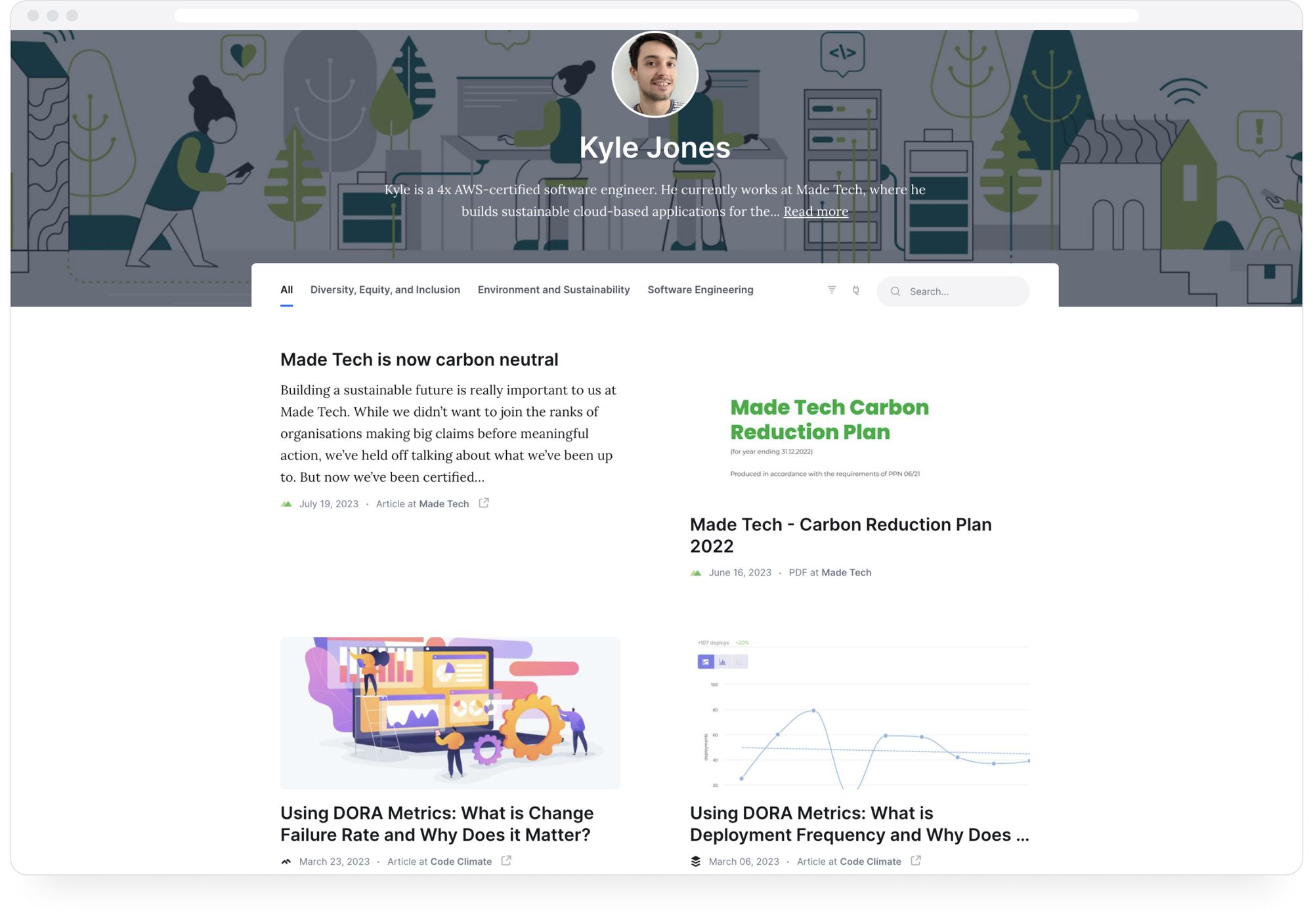
Kyle Jones builds sustainable cloud-based applications for public sector organizations at Made Tech, where he is a senior software developer. He also uses his expertise as a web developer for freelance content writing.
In the past, he worked at a tech startup in Cardiff, where he developed AI-powered business intelligence tools for risk mitigation and horizon scanning.
Kyle earned his MComp degree from the University of South Wales. His portfolio and bio provide a great example of brief, to-the-point communication with prospective employers and can be used as a template for anyone looking to create a quick portfolio. Also, check out his Github, which serves as his project page.
David Braue
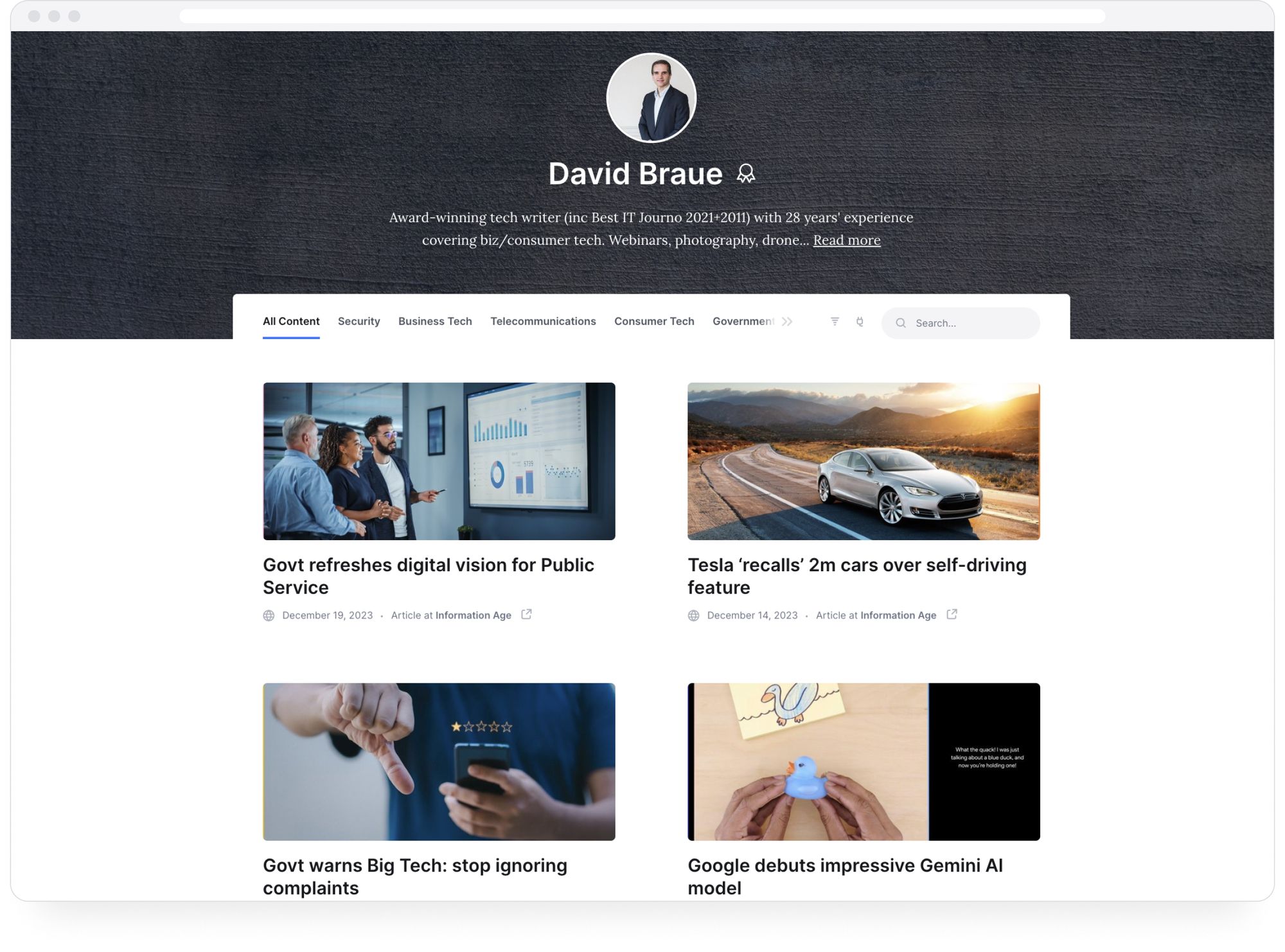
David Braue is an award-winning tech writer who has spent 28 years covering business and commerce tech. His current specializations include information security, analytics, innovation, Australian and global tech policy, cloud, enterprise digital transformation, and COVID-19-inspired remote working.
David has won the award for Australia's Best IT Journalist for 2011 and 2021. He creates textual, audio, and video content exploring science, business, and IT.
If you're a writer, particularly a tech writer, consider using David's and Kyle's portfolio examples for inspiration. They are both industry experts and have been winning the game with design and development.
Keith Yamada
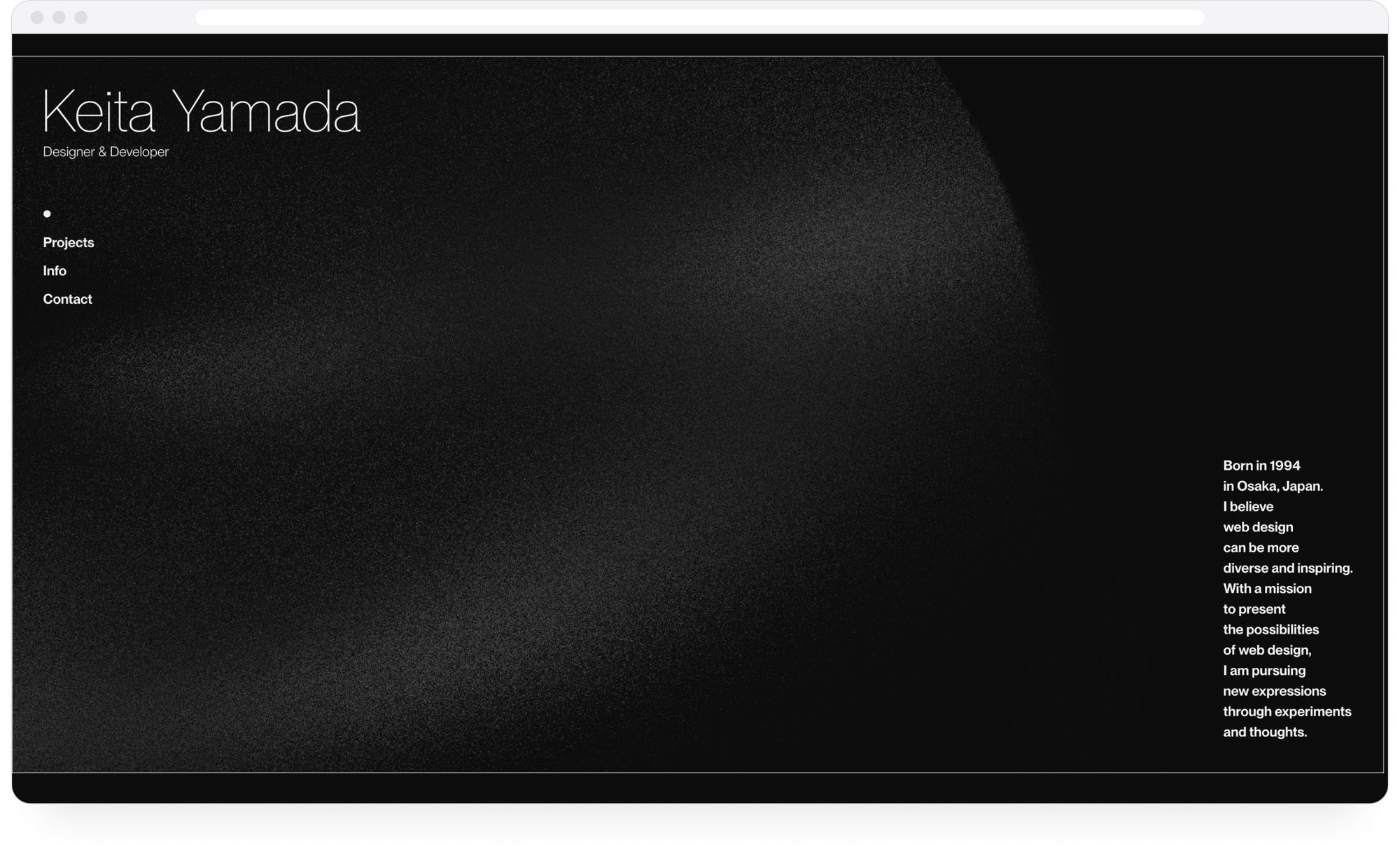
Keith Yamada is a freelance website creator whose design portfolio website is the very definition of stark minimalism.
A solid black background with waves of white gradients cresting and breaking... and that's all. With one visual effect and some white text, Keith conveys precision, sophistication, and nuance. It is as memorable as any design agency website you'll find out there.
Keith has won multiple awards — Awwwards Independent of the Year (2020 Nominee) and Awwwards Site of the Day (2x).
His portfolio page states that Keith has worked with Starpeggio, BNN Online Store, ILY GIRL, Revenge Pop, Solani, Punch, and more.
David Milan
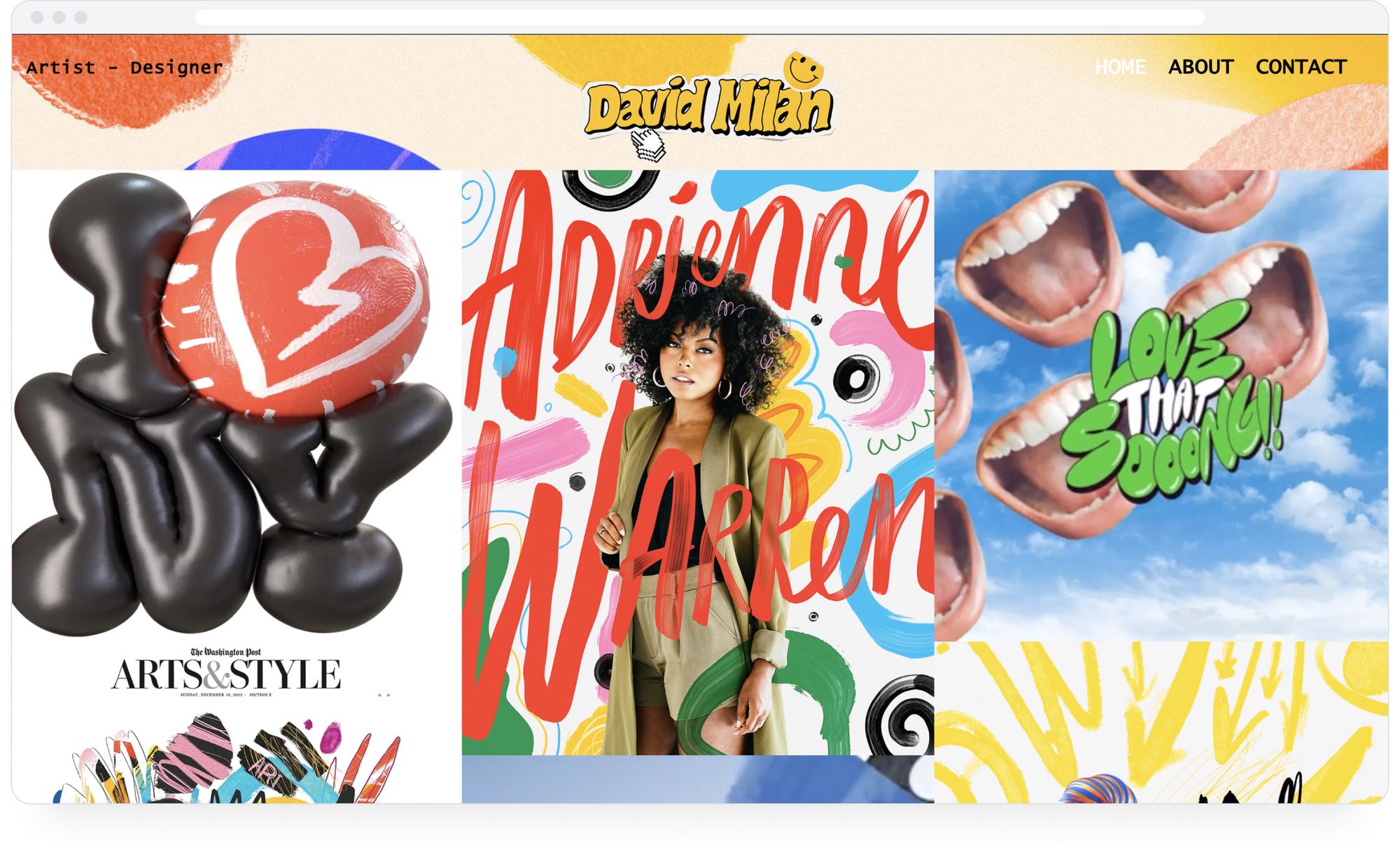
David Milan is a 3D artist and designer who functions across different disciplines like typography and illustration.
On his website, he states that he enjoys working and experimenting with colors, shapes, textures, and forms. He doesn't say much else, but one look at the high-quality images on his personal portfolio speaks volumes about his craft.
He has worked with Apple, Pepsi, Adobe, Facebook, Huawei, Oprah Magazine, CNET Magazine, WIX, and Procreate App, among other recognizable names.
Create a portfolio within minutes (because the tool does the work)
Now that you've seen these excellent examples, it's time to create a portfolio for yourself. To start with, you'll need the right tool.
Why not have a look at Authory?
As the video explains, Authory automatically finds and imports all your bylined content. It literally does over half the work: finding all bylined content you’ve ever published, importing it automatically, saving it permanently (again, automatically), and enabling you to organize your pieces into different collections.
Once all your work is imported, you can simply select the right pieces and slot them into a one-page portfolio. The effort you need to make your portfolio is absolutely minimal.
Authory portfolios are equally useful for individual professionals and organizations. If you're a design studio, for instance, use Authory to collect all previous work in a single database that will also back it up forever. No extra charges or effort is required.
For a photography portfolio, consider Adobe Portfolio.
Authory provides a Squarespace integration as well, so you can simply make a portfolio and include it on your website — good design plus a complete repository of all your work.
When you sign up for an Authory account (for free), you get the following:
A self-updating portfolio (make a portfolio automatically)
I already mentioned how Authory will automatically import a copy of every bylined piece from every site into its database. What I didn't mention is that Authory will keep updating your portfolio with newly published bylines from the same URLs.
So, let's say you've entered the URL for The New York Times, and Authory has imported all your existing articles on that site on Jan 1st, 2024. Additionally, the tool will continue to automatically import all pieces on the site with your byline, even after Jan 1st.
In other words, you don't have to keep updating your portfolio. Authory does that for you. You also get an email notification every time Authory adds a new content item to its servers.
Automated backups (never lose your content, ever)
All the content that Authory imports from different sources is saved permanently. You'll never have to worry about losing any of your published work. Even if the original website goes defunct for any reason, you'll always have a copy safely stored on Authory's server.
All backups are in the original format — text and/or media. No screenshots. This is super important because it lets you search through your content database, making it a valuable research tool.
You can also:
- search through both your portfolio and your content database to find articles/audio/videos based on keywords,
- create a custom domain with a click,
- look at in-built analytics for real numbers on content performance (engagement, readership) across the web and popular social media sites every 30 days,
- create newsletters with a couple of clicks; after setup, Authory will automatically send your newly published content to subscribers,
- display your Authory portfolio on other sites with widgets,
- and get a responsive & SEO (search engine optimization)-aligned portfolio that will show up on every search engine (with the right keywords).
The best way to figure out Authory is to take our 14-day free trial, create your own personal portfolio website, and see how much of a difference it makes to your professional life. Why not give it a shot?




